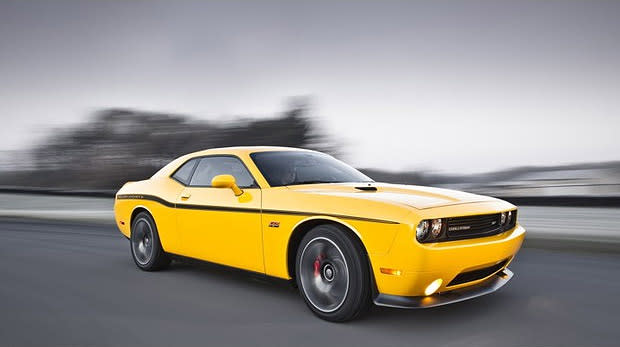America's Dirtiest Vehicles
MORE AT FORBES.COM
Nobody wants to be known as the dirtiest, at least not when it comes to air pollution.
The good news is that since 1975, overall new passenger car emissions of greenhouse gasses have decreased, and fuel efficiency has increased. The trends seem likely to continue, based partly on technological innovation, partly on more stringent government regulation, and partly on consumer interest and demand.
Electrics, hybrids and alternative fuel vehicles have received a lot of attention this year, and promise to remain in the spotlight during 2012. But the overwhelming majority of new light duty vehicles to be sold next year are likely to be powered by traditional gasoline internal combustion engines. As promising as new technologies look, manufacturers and regulators must continue to focus on improving the efficiency and cleanliness of gas engines in order to have a significant impact on air quality.
The National Highway Traffic Safety Administration (NHTSA) has issued new Corporate Average Fuel Economy (CAFE) standards for model year 2012 – 2016 passenger cars and light trucks, in coordination with the Environmental Protection Agency (EPA), which has issued national greenhouse gas (GHG) emissions standards.
The most targeted tailpipe emission for light-duty vehicles is Carbon Dioxide (CO2), and for good reason: "CO2 emissions represent 95 – 99% of the total greenhouse gas emissions from a passenger vehicle. CH4 (methane), N2O (Nitrous Oxide), and HFC (Air Conditioning Refrigerant) emissions represent roughly 1 – 5% of the total greenhouse gas emissions from passenger vehicles, after accounting for the global warming potential of each greenhouse gas," according to an EPA publication.
To determine our list of America’s Dirtiest Vehicles of 2012, we relied on NHTSA’s database of fuel economy ratings and the EPA’s Green Vehicle Guide, two publicly available resources. We also used the Carbon Footprint calculator, which helps to translate the information from the EPA into a measurement of metric tons of CO2 emissions. As in the past, we have excluded heavy-duty vehicles (which are not currently subject to federal fuel economy regulations) and vehicles which we consider "exotics," like the Bugatti Veyron. Nearly every exotic vehicle would rank as the dirtiest vehicle in its class, by virtue of a concentration on performance over fuel economy concerns. Because of their low sales volume and small distances driven annually, exotics don’t have the environmental impact of popular production vehicles, and environmental concerns are rarely part of the buying decision for an exotic.
EPA and NHTSA estimates are based on the assumption that vehicles will be driven 15,000 miles annually, and that 55% of those miles will be city miles, with 45% classified as highway miles. Using the Carbon Footprint tool, we calculated metric tons of CO2 emissions based on the same 15,000-mile annual estimate. We used the EPA’s Air Pollution Score, which accounts for "vehicle tailpipe emissions that contribute to local and regional air pollution." Emissions standards are for carbon-containing compounds (including hydrocarbons); oxides of Nitrogen; particulate matter; Carbon Monoxide; and Formaldehyde. Results are reported as a whole number score from 1-10, with "1" representing a minimum passing score and "10" representing a perfect score, with no tailpipe emissions at all. We used the California standards, which are the most stringent in the US for 2012.
The EPA numbers were the first hurdle. Vehicles with the lowest (worst) scores were then compared based on their CO2 emissions. The vehicle with the most emissions was then determined to be Dirtiest in Class.

Mercedes-Benz C300 4MATIC
Segment: Small Cars
Trim: 6-cylinder automatic AWD Ethanol/Gasoline
City MPG (Gas): 18
Highway MPG (Gas): 25
Carbon Footprint (metric tons/year): 5.83
Air Pollution Score (out of 10): 3

Toyota Sienna
Segment: Minivans
Trim: 6-cylinder automatic AWD
City MPG: 17
Highway MPG: 23
Carbon Footprint (metric tons/year): 6.11
Air Pollution Score (out of 10): 6


 Yahoo Autos
Yahoo Autos 

